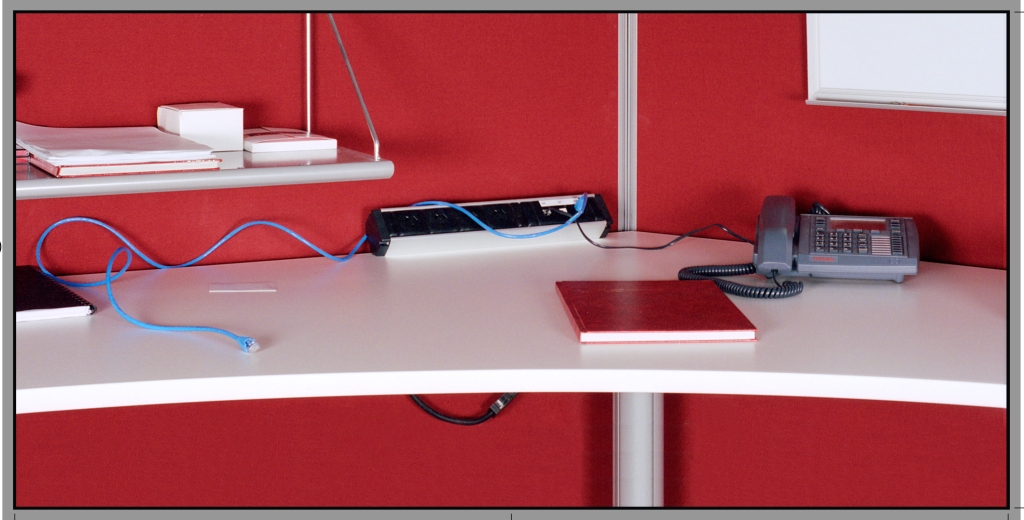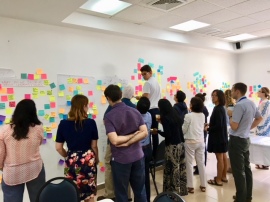Recently I met Adam Scanlon. Adam is a gamer, designer and father amongst many other things. What peaked my interest in what he was talking to me about was the way Adam was using gaming to assist his sons learning.
His son has autism. As Adam explained to me that brings its own series of unique challenges. Children with autism often don’t learn in the same methods as we would associate traditional learners and therefore new ways of teaching and learning need to be investigated.
As a commitment to finding these new innovative ways Adam has been using the game Disney Infinity.
Let me give you a little background on Disney Infinity. It is essentially a sandbox game. To me sandbox games are of great interest to education. Sandbox games are extremely open in nature and their lack of narrative is what set them apart from most other digital games. Most digital games operate in a linear fashion with a predetermined narrative, which the player must follow, and a set of ever more complicated tasks that the player must successfully complete in order to progress in the game. In contrast to this, sandbox games have no sense of progression, linear narrative or completion. Game play is entirely up to the creativity and imagination of the player/players. These games are providing a framework for the player to enter and then leaving it up to the individual’s creativity to do whatever they want.
The genre include games like Minecraft and Gary’s Mod and to a certain extent Disney’s Infinity.
When recently watching a collection of students playing Gary’s Mod they were collectively interacting and communicating with each other, they were building their own characters, they were inventing their own games within the game and more so they were inventing their own narrative within the games they were playing – that is narrative within narrative. This is an example of the game makers understanding this generation of learners and providing them with autonomy, the ability to be self-directed and beyond that providing them the ability to be highly web connected. These three concepts are important to our current western education system especially as it grapples with relevancy and what place technology plays.
So back to Adam, why is he attracted to Disney Infinity and how does it help him teach his son? 
Firstly, as Adam explained, to work with children with autism you need to find the space they are interested in. It is highly unlikely they will come to the space you think they should be in. Adam’s son loves this game and will play it for hours. So rather than pull his son away from this environment, Adam went the other way and embraced it. How could he use the environment his son loves being in to help his son learn? Isn’t this a great lesson for all educators not just those working with special needs, where can you position yourself within the child’s life to give that child the best opportunity to hear you in the first place. As Disney Infinity is a sandbox game, Adam and his son can build there own universe in there, a universe of their collective imaginations that might replicate their current one or develop new ways of seeing the world.
Children with autism need a lot of repetition to grasp certain concepts. Adam explained that to teach a certain task he would have to say it over and over. They require and demand routines and so to teach them a new one, potentially means a changing of an old one. This can be difficult and require a lot of repetition. Again, as Disney Infinity is a sandbox game Adam can now build games inside the game allowing his son to play them, enjoy them and potentially learn from them. 
A couple of very simple examples of the huge range that Adam provided me with might help give context for those unfamiliar with this type of game. To help “potty train” his son Adam built a puzzle game. The task of the game was to get the “brown object” to the toilet, at the end of the game. By playing the game over and over his son also was able to make the real life connections. This demonstrates a great way to instructionally teach something that is going to require a lot of repetition.
Adam provided me with another example of how he uses the game to teach new routines;
The current process for going to a shopping center or supermarket requires Adam and his son to go up and down every single aisle every time they visit a supermarket even if they only need to quickly go in and buy one product. This is a routine Adam’s son knows and is comfortable with and to change this routine causes particular anxiety for Adam’s son, leading to a seemingly uncontrollable outburst of emotion. Adam’s solution, using the game, was to build a supermarket within his Disney Infinity universe, and once again build a task into the game that allowed for his son to enter the supermarket find the object and leave immediately. He is helping form a pattern or predisposition into his son teaching him new ways of doing things.
Communication.
For a long time there was the common misunderstanding that because children with autism weren’t communicating with you in the traditional sense they also were not listening. This is not necessarily so and technology has provided ways for this group to have a voice. Early discoveries came with typing; children who would not necessarily speak out their thoughts when taught to type found this medium an easier way to communicate in.
Adam is interested in taking this concept further. If Disney Infinity is a space where his son feels comfortable and enjoys inhabiting potentially it can be a means for the two of them to also communicate in. One of Adams concerns for his son is a simple problem that most of us without this experience would not even consider. If his son has a toothache potentially he will never express this to Adam so how as a father will he handle this situation if he doesn’t even know it exists. While he is still only at early stages Adam is exploring ways through the game that his son might express these every day issues with him and others around him that see.
This might be something that Adam agendas within the Disney Infinity game space or potentially, his son might find the means of using it to communicate in the way he wants to.
While this piece talks specifically to children with autism the same principles apply to all classroom teaching or education in general. How can we turn the paradigm around from reductionist notions such as “teacher as expert” to “teacher as facilitator”? And if we are truly talking teacher as facilitator what do we want them to facilitate? All children exist as learners nested within their own constructions of identity. They bring their own experiences and mindsets into the classroom.
Learning occurs within a complex interplay of biological, cultural and experiential histories. Learning always occurs within the complex systems of the individual, the social surrounds and the culture within which the individual exists. Knowledge is never isolated within that or separated from it. Rather it is deeply part of the web of interactions – it arises out of it, it is an emergent, evolving phenomenon.
We can never teach the same content to each one in the same manner and expect it to have the same impact. Rather we should be getting to know our students, what are they interested in, what do they love and how do they best communicate. Then we need to adapt our methodologies to come to their worlds, not the other way around. Adam demonstrates wonderfully the powerful learning and connections that can take place when the paradigm is reversed using a technology that his child loves – a digital game.
I would love to hear any of your stories, if you are willing to share them of experiences you might have had or seen in this area.










